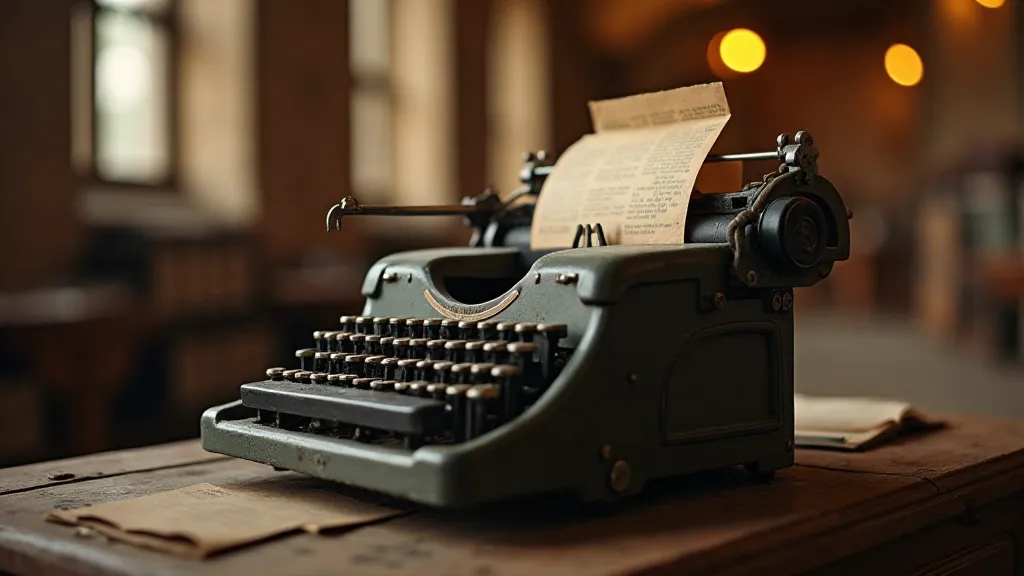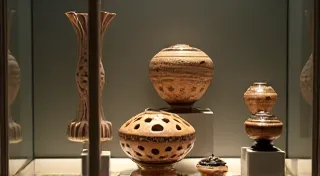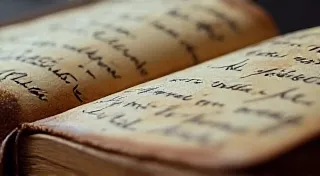The Scriptorium's Lament: Preserving the Voices of Forgotten Authors
The scent of aged paper and fading ink. It’s a fragrance most of us associate with libraries and dusty archives, a sensory echo of generations past. But imagine a place more intimate, a private scriptorium where lesser-known authors once poured their hearts and minds onto the page, their words destined for a small circle or, perhaps, silence altogether. These authors, these voices, often relied on the humble typewriter to translate their thoughts into tangible form. And a crucial, often overlooked, element of their legacy? The typewriter ribbon.
We, as collectors and restorers, are not merely preserving machines; we’re safeguarding narratives. We're custodians of whispers, echoes of lives lived and stories that, without our intervention, risk vanishing entirely. Consider the countless manuscripts hidden away in attics, tucked into trunks, their authors forgotten by the relentless march of time. Many of these documents bear the indelible mark of a specific typewriter ribbon—a particular shade of black, a distinctive hue of red. That ribbon isn’t just a consumable; it’s a thread connecting us to the original creation, a subtle clue in the detective story of literary history.
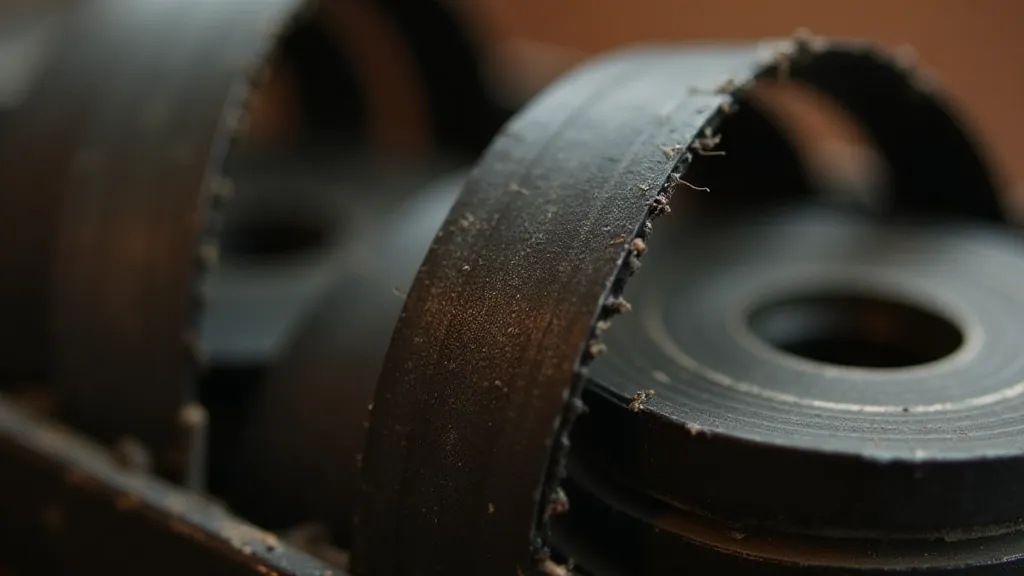
The Ribbon’s Role: Beyond Simple Consumption
The significance of typewriter ribbons extends far beyond their utilitarian purpose. A modern inkjet cartridge can be replaced with little thought, its disappearance almost unnoticed. But an antique typewriter ribbon? Its depletion marked a tangible limit. It necessitated a trip to the local stationery shop, a minor inconvenience that served as a quiet constraint on creativity. An author might have carefully rationed their ribbon, knowing a replacement was not readily available. A faded passage could hint at a dwindling supply, suggesting a hurried finish or a piece left incomplete.
Furthermore, the ribbon’s quality and color were directly influenced by the manufacturer and the era. Early ribbons often used aniline dyes, known for their vibrancy but also prone to fading. Later ribbons utilized more stable pigments, leading to variations in the permanence of the printed text. This evolution is complex, and understanding the chemical processes involved in those early dye formulations can be a fascinating pursuit—a journey into what some might call "Chromatic Ghosts: Unraveling the Mysteries of Ribbon Dye Formulas". These subtleties matter. They are indicators of the document's age, its environmental exposure, and potentially, the author's choices.
A Personal Encounter with Forgotten Words
I recall finding a beautiful Smith Corona Silent in a rural estate sale. Among its contents was a collection of unpublished short stories, typed on a single, remarkably well-preserved ribbon. The stories were quirky, poignant, and undeniably the work of a talented, though unrecognized, voice. The ribbon itself was a deep, almost charcoal black, and the stories exhibited a slight purple cast – a common characteristic of aniline dyes exposed to light and air. As I held those pages, I felt a profound sense of responsibility. Here were words yearning to be rediscovered, narratives held captive by the fragility of a forgotten ribbon.
It wasn't just about the words, though. It was about the tangible connection to the author’s process. I imagined her sitting at that typewriter, the clack of the keys a rhythm to her thoughts, the ribbon slowly unraveling with each word committed to paper. That ribbon was her confidante, her silent collaborator. To allow it to simply degrade would be to silence her voice all over again.
The Art of Ribbon Preservation: A Delicate Dance
Preserving antique typewriter ribbons is a delicate process, requiring an understanding of their composition and the factors contributing to their deterioration. Direct sunlight, humidity, and acidic environments are the ribbon’s enemies. Proper storage is paramount. Acid-free enclosures and a cool, dry location are essential. Avoid handling the ribbon excessively, as oils from our skin can accelerate degradation. The challenges in preserving these fragile threads of history are numerous, and often require a level of expertise that goes beyond simple storage techniques. Some restorers actively work to revitalize damaged ribbons, a process akin to "The Alchemist's Crucible: Transforming Damaged Ribbons into Viable Writing Tools", demonstrating incredible ingenuity and dedication.
The challenge lies in balancing preservation with accessibility. We want these voices to be heard, these stories to be read. Simply sealing a ribbon away in an airtight container renders it inaccessible. Therefore, a strategy of careful handling, periodic inspection, and limited exposure is often the best approach.
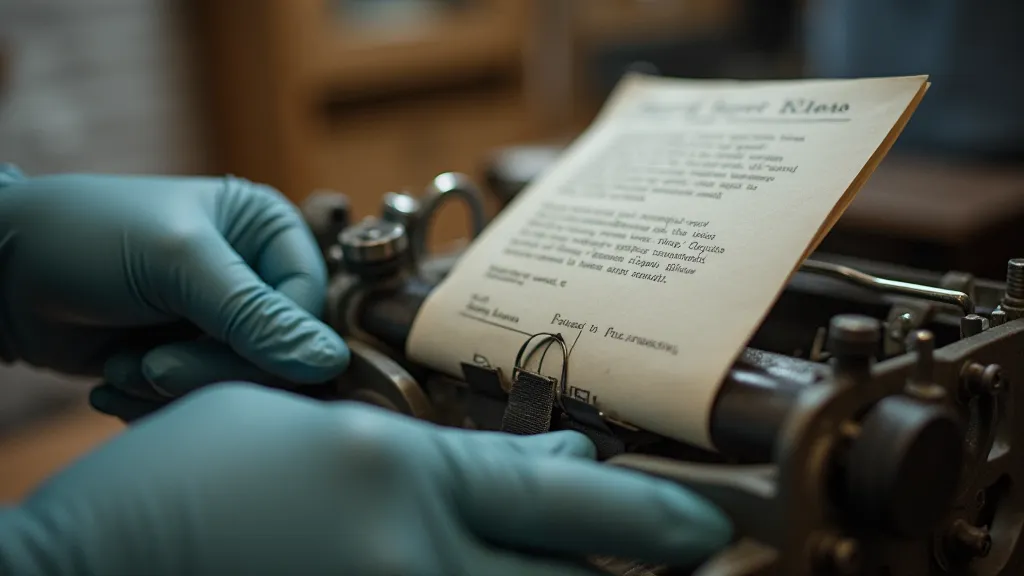
Beyond Preservation: The Collector's Perspective
For collectors, antique typewriter ribbons offer a unique window into the history of writing technology and the evolution of printing techniques. Early ribbons, often made from coarse cotton fabric, contrast sharply with the finely woven nylon ribbons of the mid-20th century. The variety of colors available—from standard black and red to more unusual hues like purple and green—reflects the changing tastes of the time. The very essence of a collection can be tied to these small, often overlooked details.
Moreover, rare or unusual ribbons can significantly increase the value of a typewriter or a collection of documents. A ribbon used by a famous author, or one associated with a historically significant event, can become a prized artifact. The hunt for these elusive ribbons is a rewarding pursuit, a journey into the past filled with discovery and intrigue. Understanding how these ribbons connect across generations of writers – how they form "The Weaver's Thread: Connecting Writers Across Generations Through Ribbon Care" – is a key element in appreciating their significance.
The Expanding World of Typewriter History
The study of antique typewriter ribbons and their impact on literary history is a burgeoning field. Beyond the technical aspects of dye composition and fabric construction, there’s a fascinating interplay between the tangible object and the creative process. Think about the conscious or subconscious choices an author might have made based on the limitations of their ribbon supply, or the influence of the ribbon’s color on the mood of their writing. These considerations add layers of meaning to the written word.
The way in which stories are interwoven, the ways narratives connect – this echoes through the history of writing and material culture. And a deep appreciation of this interwoven tapestry demands consideration of the materials that bind it together, like the typewriter ribbon itself. It's a complex and richly rewarding subject, one that requires a dedication to both historical research and hands-on preservation.
Ethical Considerations in Preservation
As custodians of these historical artifacts, we bear a significant ethical responsibility. While the desire to preserve and share these stories is admirable, it’s crucial to approach preservation with sensitivity and respect. Reconstructions and reproductions, while potentially helpful in making the stories more accessible, must be clearly identified as such. The authenticity of the original ribbon is paramount to understanding its historical significance.
Furthermore, it's important to consider the provenance of these ribbons. Understanding their origins – who used them, what stories they helped to create – adds a crucial layer of meaning to their preservation. Ethical collecting practices demand transparency and a commitment to sharing knowledge with the wider community.
Future Directions in Ribbon Research
The field of typewriter ribbon preservation is continually evolving, with new technologies and techniques emerging to help us better understand and protect these fragile artifacts. Advanced imaging techniques, such as X-ray fluorescence and Raman spectroscopy, can provide valuable insights into the chemical composition of dyes and the condition of fabric. Digital archiving and virtual restoration offer innovative ways to make these stories accessible to a global audience.
Moreover, collaborative efforts between historians, archivists, and conservators are essential for advancing our knowledge and ensuring the long-term preservation of typewriter ribbons. Sharing best practices, developing standardized preservation protocols, and fostering a sense of collective responsibility are crucial for safeguarding this invaluable part of our cultural heritage.
The Future of Forgotten Voices
As digital technology continues to transform the way we write and communicate, the humble typewriter ribbon may seem like a relic of a bygone era. Yet, its significance remains undeniable. It represents a connection to a time when writing was a more deliberate and tangible act, a time when words carried a greater weight. The stories preserved in these fragile ribbons offer a powerful glimpse into the past, and their continued preservation is vital for future generations.
